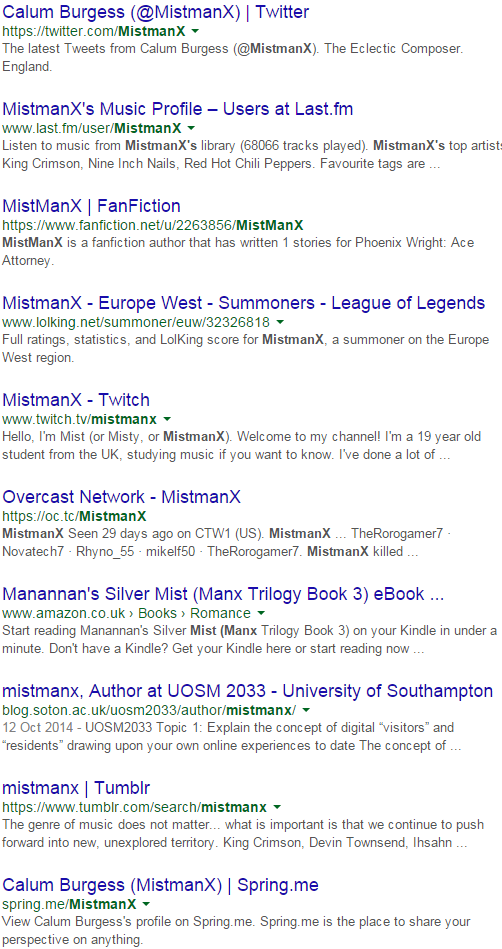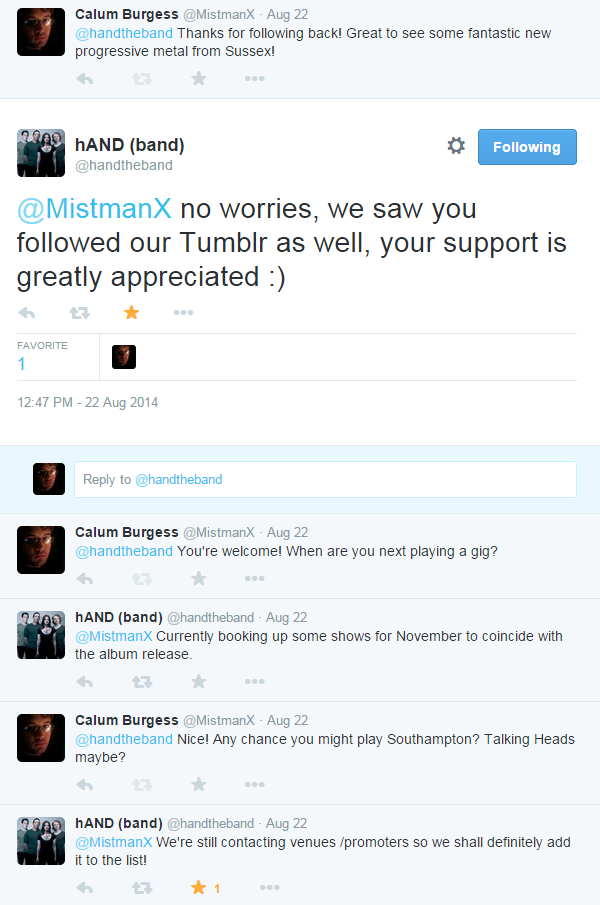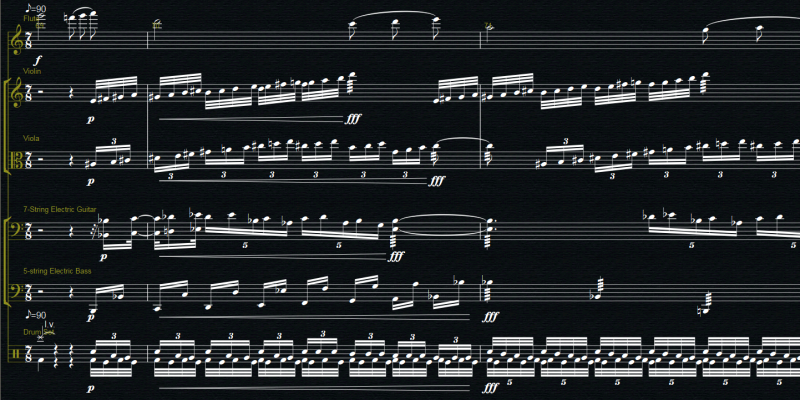Ch-Ch-Changes: Developing Your Online Profile
In my last post, I covered the advantages and disadvantages of multiple online identities, and briefly mapped out an example ideal situation. The question, of course, is how does one take advantage of that situation? What makes that “strong” identity a successful one?
UoSM2033 Topic 3: Discuss the ways in which an authentic online professional profile can be developed
There are countless ways to develop one’s online profile – as it is pertinent to myself, I shall be covering how an independant musician could develop theirs.
AIMS
Take a look at these two videos:
Both videos feature people who have been extremely successful because of their online profiles. Gary Vaynerchuk’s success has allowed him to expand his persona into a public brand (enabling him to continue to create new media, publish books etc.) whilst MatPat’s Game Theory series served as an online portfolio and enabled him to secure a job.
I would argue that a successful independent musician requires even greater interplay between their online profiles and offline selves than the above two examples; instead of selling yourself as a product to companies, you are selling your music, as an extension of yourself, to your audience, the general public.
As I stated in my last reflection:
The objectives of the online artist… should be audience expansion and audience retention.
Figure 1 shows my diagram of my concept of the “Feedback Loop”; it displays the four main ways a musician develops a relationship with their audiences, and how they all “Feed Back” into one another. The main aim is to create as much flow around the diagram as possible, which expands and retains your audience by engaging them. If your music is good, then your performances and merchandise should speak for themselves; however, your online presence intrinsically connects your Profile and Interaction. So, how do we make this a positive impact?
BUILDING BRAND
As Tomas Chamorro-Premuzic states in his article, The Future of You,
We are all individuals, but unless we are also a brand, our individuality will be invisible. Being a brand means showcasing that which makes you special, in a way that is distinctive (recognizable), predictable (consistent), and meaningful (it allows others to understand what you do and why).
So, how do we manage this? Let us take the example of Adam Pacitti’s infamous EmployAdam campaign. A large part of its success, as Art Jonak states in his analysis of the campaign, is that “Simple Sells”.
I keep to this mantra by employing the same set of graphics across my online profiles (See Fig. 2 & 3), even using the same Black and White colour scheme. The images represent who I am (Picture of me) and what I’m about (Music – from one of my own pieces).
These two images are now almost as synonymous with me as my name, or the username MistmanX, which I hold almost exclusively across the web (see Fig. 4).

Fig. 4: First Page of Google Results for “MistmanX” (08/11/2014) – All but one result is about me, though admittedly some others are not relevant to my music
POSTING CONTENT
The other major strength of Pacitti’s campaign was that it directly showcased his skills; his video “cleverly weaves in his resume” (Jonak). You have to let your profile do the same: with dedicated platforms like YouTube and Bandcamp being easily integrated into websites like Facebook and Twitter, there’s no excuse not to.
The music industry is not the same as it once was. People want to “try before they buy” (Hill). The record companies are not the most important ears your music needs to reach any more. Your audience NEED to be able to hear your music.
BEING GENUINE
It is, however, important that your social media does not appear to just be an online marketing campaign. Ari Herstand raises a number of good points in his article, but of most interest is the last point, in which he states, “fans want to get to know you on an intimate level. They want to live vicariously through you.”
Whilst that last sentence is perhaps on the extreme end of this thinking, it is important that your personality comes through in your profiles; this is why I don’t hesitate to tweet about Formula One or Video Games, and why Jørgen Munkeby’s Twitter profile is one of my favourite (See Fig. 5). When he tweets or retweets about spam email, memorial concerts or strange art in his hotel, it expands his personality beyond that of the
Singer/saxophonist/guitarist/composer for the Norwegian Blackjazz band [Shinng]
making him more relatable and engaging his audience.

Fig. 5: Jørgen Munkeby on Twitter (08/11/2014)
INTERACTING
Ultimately, Social Media is just that; social. There are numerous articles that tackle this issue, from Dave Kusek’s on Hypebot to Joshua Smotherman’s on Cyber PR Music. The benefits of interacting openly with your followers are varied: it adds a personal touch, it allows you to get instant feedback and, perhaps most importantly, it forms a community around you and your music.
The band hAND, on Twitter, have an excellent conversational style which actively invites interaction from fans (See Fig. 6). It is obvious to me that my Twitter interactions with the band hAND made me even more interested in their music than I already was, and in addition to the fact that I then went and recommended them to my friends, they also gained information that they were looking for (See Fig. 7).

Fig. 6: An Excellent Example of a Conversational hAND Tweet

Fig. 7: One of my Interactions with hAND on Twitter
Ultimately, a community is going to do much better at spreading the word about you between their friends, both on- and offline, than you could ever hope to do on your own, because it auto-generates Feedback in your Feedback Loop. Take, for instance, this news article by Damien Leech on Heavy Blog is Heavy, which reflects brilliantly on Townsend, Munkeby, Ihsahn and even myself, even if the mentioned collaboration has not happened (yet). It is a piece of content that has been created by a member of the artists’ communities, from the artists’ interactions with their communities, and creates excitement, interest and engagement.
References & Bibliography
Burgess, C. (2014). Identity Crisis: How Many Online Identities Should You Have? The Progressive.
Burgess, C. (2014). Identity Crisis: A Reflection. The Progressive.
Chamorro-Premuzic, T. (2013). The Future of You. Harvard Business Review.
Herstand, A. (2014). 10 Reasons Why Your Band Is Failing At Social Media. Digital Music News.
Hill, A. (2013). Illegal downloaders ‘try before they buy’. Broadbandchoices.
Jonak, A. (2013). Case Study: Lessons from Employ Adam. Simple Sells.
Kusek, D. (2014). 10 Secrets Of Social Media For Musicians. HypeBot.com.
Leech, D. (2014). New Collaboration Featuring Ihsahn, Devin Townsend And Jørgen Munkeby? Heavy Blog is Heavy.
Pacitti, A. (2013). EMPLOYADAM. Adam Pacitti.
Smotherman, J. (2013). Are You Guilty? – 4 Ways Indie Musicians Are Killing Social Media. Cyber PR Music.
On Twitter:
Calum Burgess (@MistmanX)
hAND (band) (@handtheband)
Jørgen Munkeby (@jorgenmunkeby)
On Youtube:
Gary Vaynerchuk Teaches Basic Social Media Principles to CNN on TopCultured.com YouTube Channel.
Draw My Life – Game Theory, MatPat, and YOU! on The Game Theorists YouTube Channel.



